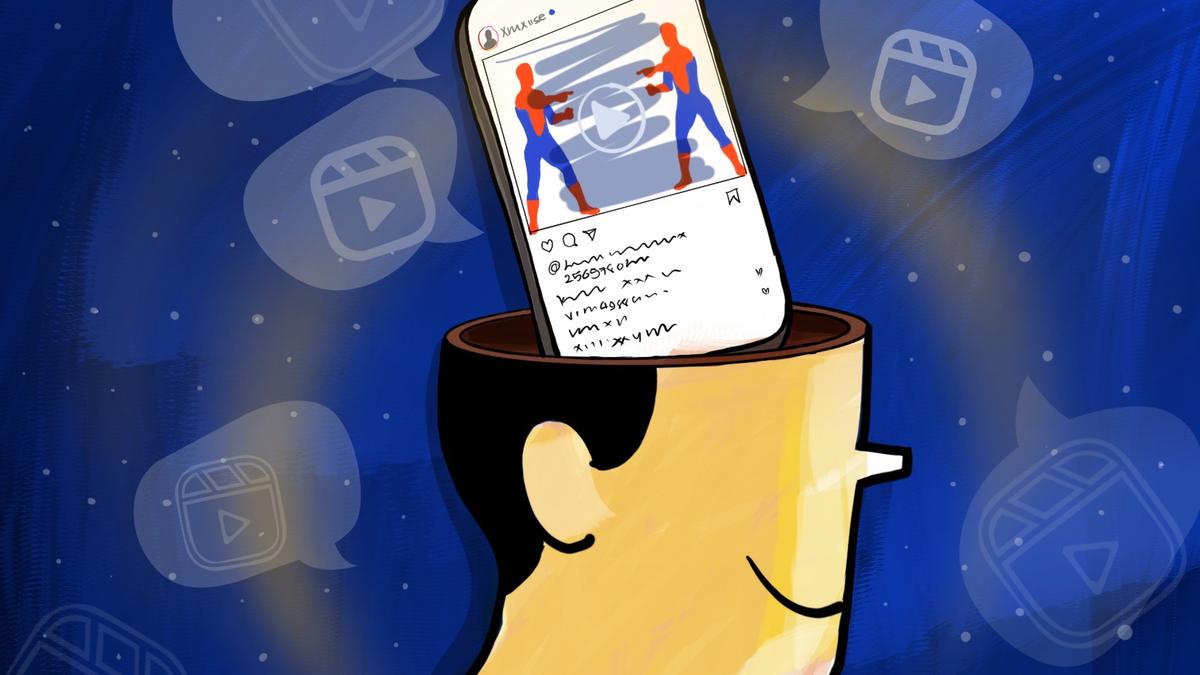Humor has evolved, from printed jokes and cartoons in magazines to the fast-paced world of digital memes and video shorts.
| Photo Credit: SREEJITH R. KUMAR
Though I hate to admit it, my mornings often begin with checking social media on my phone. As I scroll through the unread messages, I am flooded with photos containing motivational quotes, morning greetings, jokes, news updates, government announcements, and other information. Popularly called memes, these are snippets of information packaged and delivered in visually engaging ways. They are like mini-advertisements, artistically crafted to impress the viewers.
As I browse through these forwarded gems, I often wonder who created them in the first place. Many of them carry the creator’s name watermarked in a corner. I am impressed by the ingenuity of these meme creators. A meme creator should be a multi-faceted personality with a combination of wit and intelligence. He should be topically aware and smart enough to choose an appropriate meme template that would match with the information that he intends to share. Both the information and the template should resonate with the audience. If they fail to connect, the meme simply will not be shared, as sharing is the life force of a meme.
Memes are images with a piece of text, typically comical in nature, that are spread rapidly by social media users. The viral nature of memes is behind the etymology of its name. The first usage of the term, meme, comes in the book, The Selfish Gene, by Richard Dawkins. He considered meme a concept similar to a gene (the idea of transmission), which passes on from one person to another. Humans love to share information and gossip about things. They want to pass on information about someone or something when they are in a conversation. Social media and memes have tapped this basic human instinct into huge proportions. We can see people sharing and forwarding memes in troves.
Double-edged weapons
Because visuals leave a stronger impression than words alone, memes are powerful tools. Nevertheless, memes can be double-edged weapons. Teams winning trophies, a key message from a national leader, an announcement from a moviemaker, all reach large sections of people in a fraction of a second. On the other hand, Internet-users often forward these memes without checking the veracity of the information. Fake news about wars, death of a famous person, tragic accidents, separation of popular couples, and religious hate news are also easily spread through memes. Memes with fake information can be destructive as they are powerful weapons of bullying, media attacks, isolation, and targeting of people.
Why do people create memes? While some meme creators are paid professionals — often known as content creators — many do it for fun, driven by creativity and the joy of making others laugh. For them, meme creation is an expressive art form. There is even a friendly rivalry among creators over who can produce the most timely and relevant meme after major events.
Humour has evolved, from printed jokes and cartoons in magazines to the fast-paced world of digital memes and video shorts. At its core, a meme has two main ingredients — a compelling piece of information and a relevant template. Choosing the appropriate meme template is the key aspect, which attracts the attention of the viewers. The templates are chosen from popular movie scenes, iconic moments from sitcoms, and funny expressions of political leaders, sportspersons, and comedy actors. There are popular meme templates available such as the unimpressed cricket fan, Drake’s “Hotline Bling”, Batman slapping Robin, comedian Vadivelu, Cheems the dog and so on. Every detail matters in meme creation: the content, the choice of template, font size and placement, and even the overall dimensions of the image. A well-crafted meme is a combination of design, wit, and timing.
Memes bring people together through humour and can act as a catalyst for driving social or political conversations. However, despite the best intentions of a meme creator, not everyone gets every meme. As memes grow in popularity, they also face issues such as idea theft and copyright infringement. The future may bring legal frameworks for protecting and regulating meme creation. What is clear is that memes are no longer just jokes — they are evolving into a form of digital communication and even professional expression. In a world where advertisements cost millions, a powerful meme created at a fraction of the cost might reach more people — and leave a stronger impact.
rishiortho@gmail.com
Published – July 20, 2025 04:25 am IST

